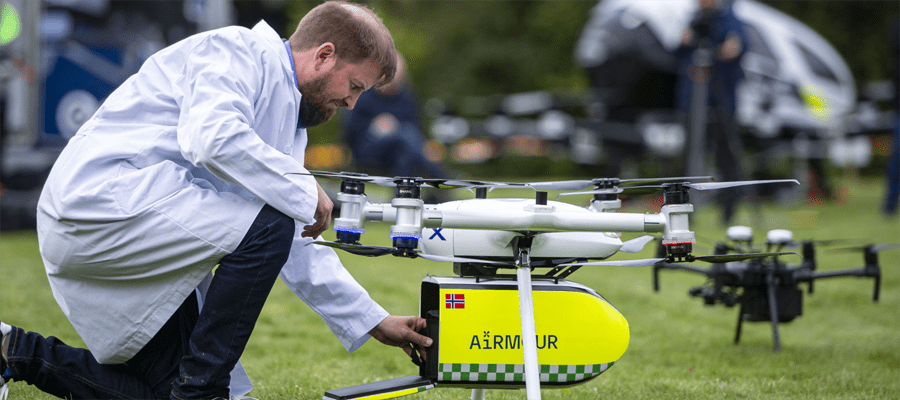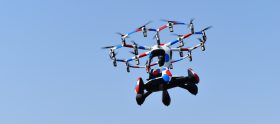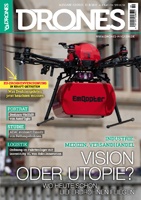Emergency medical drones are coming – new guidebook explains how drones can be harnessed to support emergency medical services in cities
In recent years, drones have often been associated with war and destruction. By contrast, the EU-funded AiRMOUR project has tested ways in which drones could be used to save lives. In Stavanger, Norway, a drone delivered a cardiac pacemaker to a remote location, while in Kassel, Germany, a drone delivered a tissue sample from an operating room to a laboratory, and in Helsinki an EpiPen was flown from the mainland to an island.

While these were just short tests, in real life situations, the operations could have saved the life of a person having a life-threatening heart attack or a person in anaphylactic shock. As for the third case mentioned, analysing a cancerous tumor at a distant laboratory while the patient is on the operating table significantly shortens the duration of a challenging surgery, thereby increasing survival chances and reducing costs.
Published on 22 November, the Guidebook for Urban Air Mobility Integration supports city decision-makers in preparing a UAM strategy and harnessing drones to support emergency medical services. The information presented in the guidebook is based on the findings of the three-year research and innovation project AiRMOUR and test flights carried out in Germany, Norway and Finland. The guidebook was released in seven languages: English, French, German, Dutch, Finnish, Swedish and Norwegian.
Life saving drones’ daily flights in Europe only matter of time
The City of Helsinki’s non-profit innovation company Forum Virium Helsinki is in charge of this EU project’s communications.
–It’s our responsibility to support cities in general and Helsinki in particular with the adoption of this innovative mode of transport in the most sustainable and responsible way, which is why we’re very happy to see that the project’s findings and learnings have received such a warm welcome, Forum Virium’s EU Project Manager Renske Martijnse-Hartikka says.
In Kassel, Germany, the region of Nordhessen has already started the process to turn these tests into a real, daily service to benefit the laboratory as well as hospitals in the wider region.
– In Stavanger and Helsinki, in turn, we have helped increase knowledge, build a network of stakeholders and gain experience that is needed for urban air mobility planning and roll-out, Martijnse-Hartikka adds.
–Without AiRMOUR it would have taken much more time to push the drone topic forward internally. Inspired by the work and learnings from AiRMOUR, we are now into development of drafting and testing our own aspirations for Helsinki U-Space Digital Twin, says Christina Suomi, the Head of Spatial and Strategic Urban Planning of City of Helsinki.
The AiRMOUR project coordinator, Principal Scientist at VTT, Finland, Petri Mononen also thanks healthcare sector operators for welcoming the innovation with interest:
– The discussion and the cooperation with emergency medical services professionals and domain has been extremely fruitful and rewarding. A lot has been achieved, a lot remains to be done in the upcoming years, but we’ve been able to establish that there’s a widespread consensus that unmanned aviation and these systems will be bringing a lot of added value to the emergency and medical services.
Im Drones PR-Portal erscheinen Nachrichten und Meldungen von Unternehmen aus der Drone-Economy. Für die Inhalte der Pressemitteilungen sind die jeweiligen Unternehmen verantwortlich.










